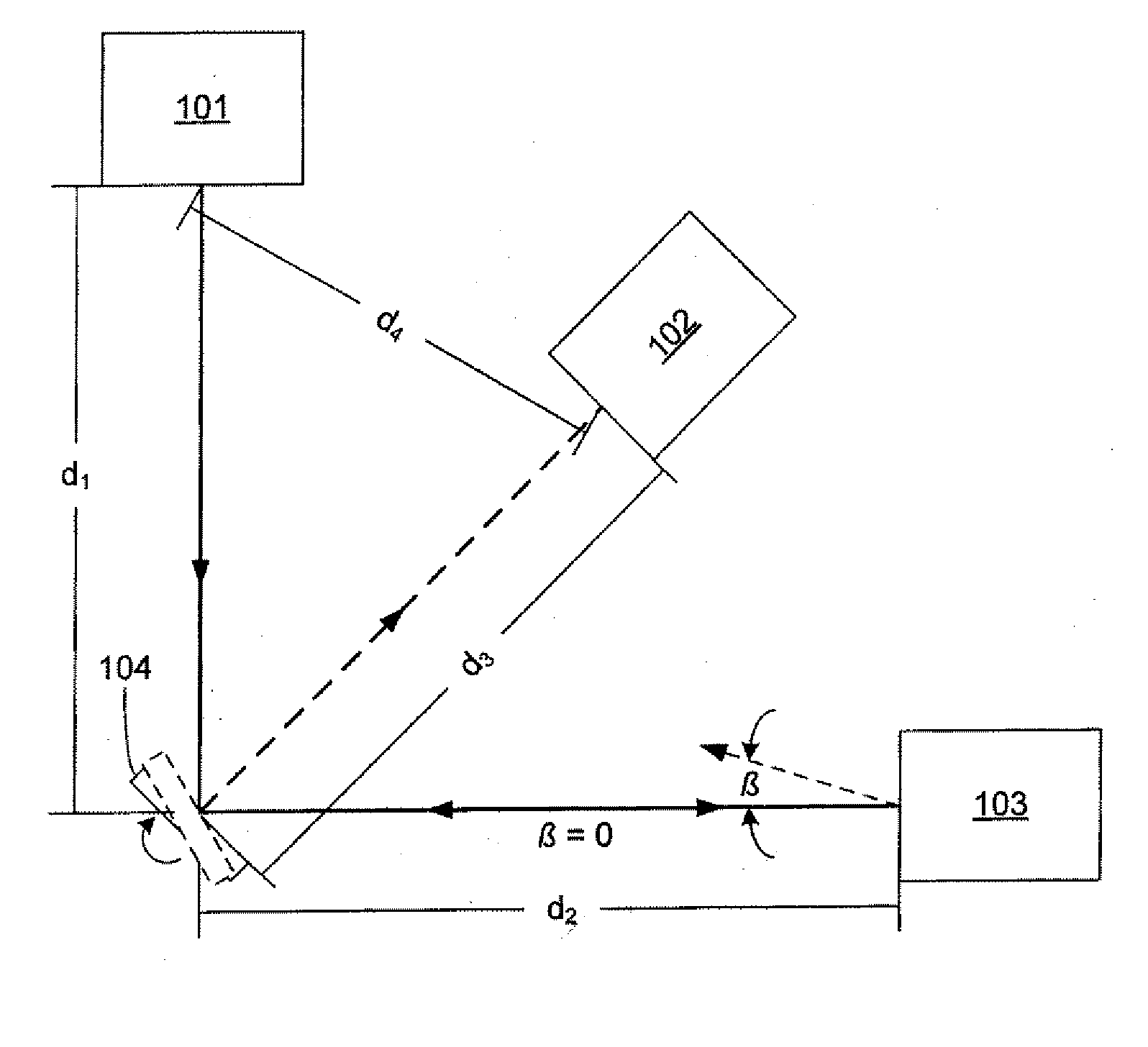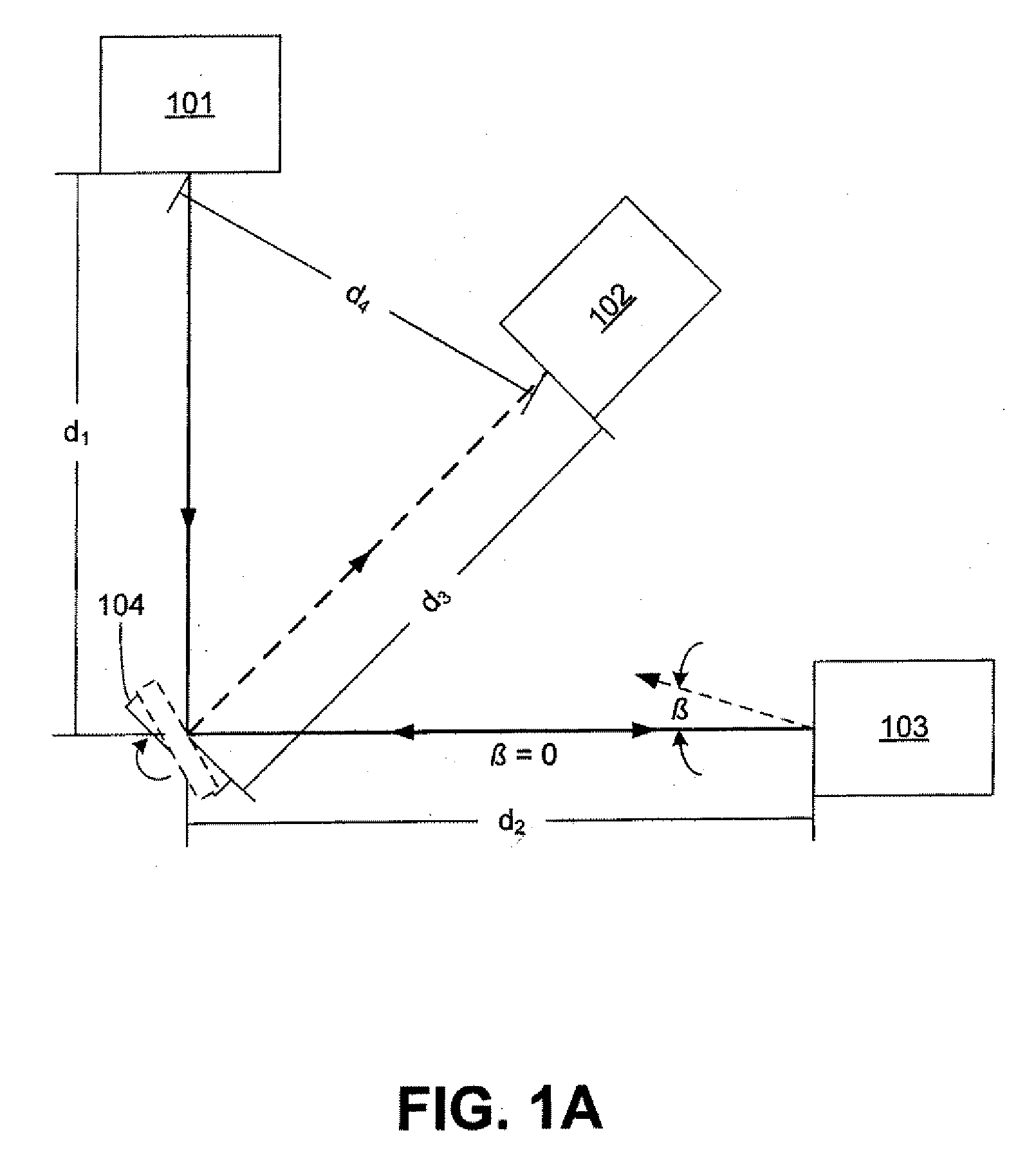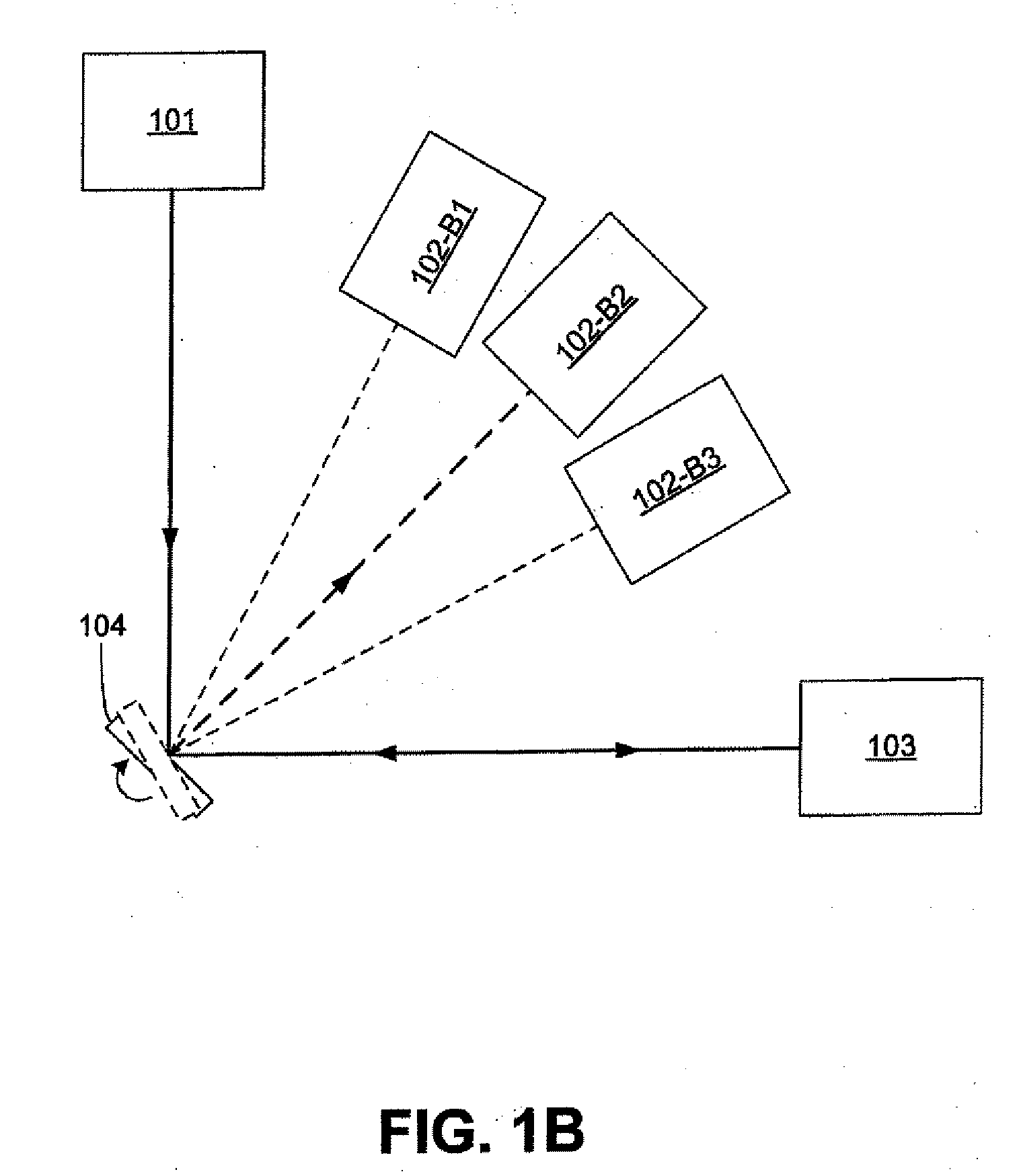Systems for measuring backscattered light using finite speed of light
a technology of backscattered light and finite speed, applied in the direction of distance measurement, instruments, material analysis, etc., can solve the problems of affecting the interpretation of information that is retrieved, increasing the signal intensity of the detector, and ray interference with each other
- Summary
- Abstract
- Description
- Claims
- Application Information
AI Technical Summary
Problems solved by technology
Method used
Image
Examples
Embodiment Construction
[0014]Systems for measuring backscattered light are provided, and several exemplary embodiments will be discussed in detail. In this regard, embodiments may be used for measuring the spatial relationship between objects at a distance. Additionally or alternatively, some embodiments may be used to provide information about the size distribution and / or chemical properties of particles in a sample.
[0015]FIG. 1A shows an exemplary embodiment of a system for measuring backscattered light that incorporates a light source 101, a rotating mirror 104, and a detector 102. The mirror 104 rotates at a rotational frequency f. Light from the source 101 is directed to the mirror 104, which reflects the light toward a sample 103. The sample 103 scatters the light. The exactly backscattered (β=0) light propagates back toward the mirror 104. During the time interval in which the light propagates to the sample and back to the mirror, mirror 104 has rotated. Thus, the mirror is positioned to reflect th...
PUM
| Property | Measurement | Unit |
|---|---|---|
| rotational frequency | aaaaa | aaaaa |
| phase lag | aaaaa | aaaaa |
| size | aaaaa | aaaaa |
Abstract
Description
Claims
Application Information
 Login to View More
Login to View More - R&D
- Intellectual Property
- Life Sciences
- Materials
- Tech Scout
- Unparalleled Data Quality
- Higher Quality Content
- 60% Fewer Hallucinations
Browse by: Latest US Patents, China's latest patents, Technical Efficacy Thesaurus, Application Domain, Technology Topic, Popular Technical Reports.
© 2025 PatSnap. All rights reserved.Legal|Privacy policy|Modern Slavery Act Transparency Statement|Sitemap|About US| Contact US: help@patsnap.com



